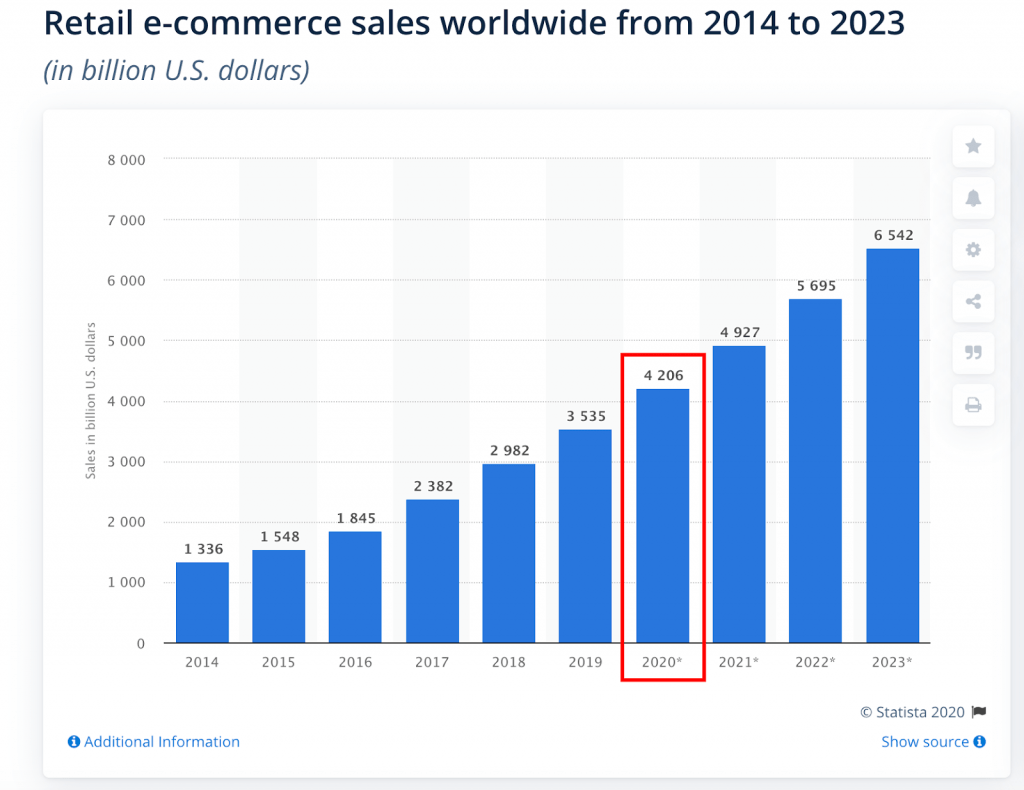We’re finally coming out the other side of the global coronavirus!
People are no longer wreaking havoc on our local supermarket shelves and small businesses are slowly making their services available again – which means that we can all indulge in that long-awaited pub feed.
While transitioning back to the new normal may be easy for consumers, what about businesses? How should your communications and marketing strategies adapt to the new normal?
To make things easier for businesses that don’t have an exit strategy, we’re coming to you with a complete guide on how to adjust your marketing after COVID-19.
Assess your financial damage
The first step in adjusting your marketing strategy is to determine just how much your small business has been financially affected.
Start by updating your financial statements for this quarter: this could be your profit and loss statement or a cash flow statement. Then, compare them to last year’s numbers. This will give you a good understanding of COVID-19’s impact.
COVID-19 has triggered unprecedented mass layoffs. If you’ve had to lay off some or all of your employees, consider how you’ll factor this into your rebuilding plan.
Cease any irrelevant messaging
By now, your consumers most likely understand the importance of social distancing and washing their hands; there’s no need to prioritise these messages over your own.
If you’ve bombarded your mailing list with COVID-19-related information since the onset of the virus, then now’s the time to stop. They could be just one ‘we’re in this together’ email away from unsubscribing!
Keep providing relevant information
As businesses begin to swing their doors back open, consumers will have a lot of questions in the back of their minds.
For restaurants and cafes, be sure to review your social media sites for common queries. Patrons will most likely be wondering whether they need to make a booking or if your restaurant provides take-away.
Similarly, retail customers will be curious about what your store’s hours currently are, what your patron limit is, and whether or not they can click and collect. Be sure to address these types of questions in a statement or post on social media!
If you operate a professional services business, things will be working a bit differently. Here at Bear, some employees have returned to the office under strict guidelines while some are continuing to work from home.
Be sure to let your clients and partners know if you’re allowing in-person meetings; if not, how are you planning to communicate with them? Are there any changes in the way your staff may be communicating with clients? Work with your team to put together the best answers and support options for your clients. This will speed up the process of resolving important consumer queries.
Tip: Social media is a great way to expand reach and generate traffic, while email is more effective at personalised communication. Consider integrating these two platforms for an even stronger marketing strategy!
Refine your e-commerce capabilities
If there’s a time to improve your e-commerce, it’s now!
According to a new Global Shopping Index report published by Salesforce, e-commerce purchases in Q1 of 2020 grew by 8% from Q1 of 2019. Statistics also show that by 2021, almost one-third of the global population will be making their purchases online.

Even as small businesses slowly reopen their doors, people around the world are still taking safety precautions and making online purchases to avoid physical contact.
Now’s an important time to ensure that your website and e-commerce capabilities are up and running, and serve as the forerunner to your online shopping experience. Run through your website and make sure that the purchase journey is smooth, ensuring that any ‘out of stock’ messages are clearly displayed on your website.
Tip: If you operate a retail or hospitality business, consider introducing broader e-commerce options, such as click and collect, contactless delivery and AfterPay payment options. This will provide a more flexible online shopping experience for your customers.
Consider funding or financial assistance
The COVID-19 crisis has disrupted and threatened the livelihood of thousands of businesses throughout Australia. Fortunately, the federal and state governments have implemented a number of subsidy programs since the onset of the virus.
For Australian businesses, you may be eligible to receive:
- support loans and grants;
- economic relief packages;
- mentoring opportunities;
- financial counselling;
- industry support;
- payroll tax, electricity bill and government premises rent relief.
If you operate or own a business in Queensland, and COVID-19 has impacted your business, and you’d like to learn what support may be available to you, follow this link. For businesses operating outside of Queensland that require assistance, follow this see here.
Tip: If you have limited resources for marketing and creative output, try out the new YouTube video builder! You can put together static images, text and logos to quickly generate a short YouTube video for your business’ advertising.
If you have any questions about marketing or how to navigate your updated messaging, please get in touch. We’d love to hear from you!